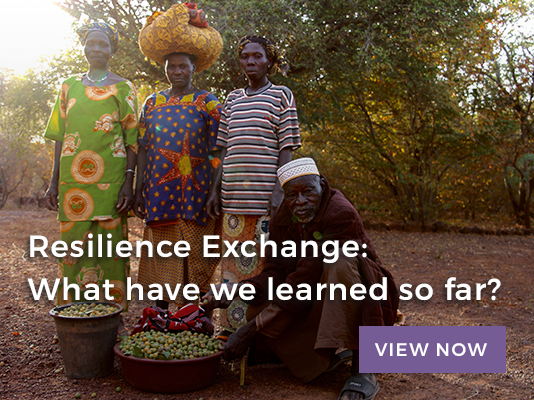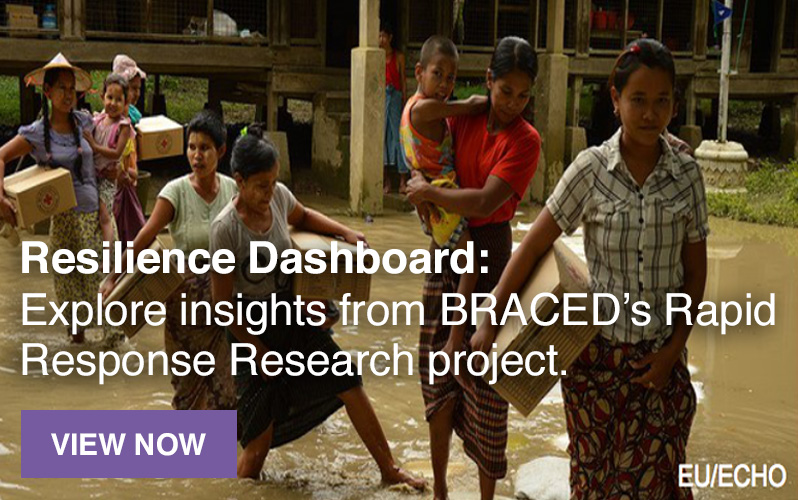In Focus
Men sweeping? Women inheriting? Rural Kenya shakes up gender roles
As farmers face greater climate change threats, loosening gender restrictions and getting men and women talking can help them stand up to the pressures
BRACED Updates
Wajir county opens GIS lab to support rangeland and water planning
Data collected will inform the location of water points
Promoting community initiatives and decisions making, an effective ...
Institutional anchoring has established transparency when funded projects are implemented
News
In rain-short Niger, wasps deployed in war on crop-munching worm
As a millet-destroying worm thrives in drier conditions, farmers learn how to breed wasps that can control the pest damaging their food supplies and incomes
Kenya issues smart ID cards to protect fishing and forests
Cards aim to make it easier to identify those illegally cutting mangrove forests or poaching fish along Kenya's coast
Kenyan farmers mix tradition with tech to protect drying Mara River
New technology aims to help governments - and farmers - get an idea what might lie ahead for river levels
Bugs and biogas: Kenyan farmers get creative to fight 'devil's' cactus
Farmers are fighting back against the prickly pear, a non-native, invasive plant which destroys the grass that feeds their animals
Protect coastal, island communities now as seas rise, scientists urge
Some areas that once flooded only every 100 years or so could face annual flooding by 2050 unless strong protective measures are put in place
From Indonesia to Gabon, countries turn to nature to cut climate risks
"There is a wealth of evidence ... that if we restore, protect and enhance ecosystems, they will lower human vulnerability to climate change"
Resources
Report Livestock Markets in the Sahel
This report focuses on Mali, Niger and Burkina Faso, and aims to inform governments, regional institutions and technical and financial partners about current livestock market dynamics in the Sahelian ...
Report Early outcomes of climate finance in Kenya
This report explores whether public investments made by government-led climate funds in Kenya are building climate resilience that responds to locally determined priorities.
Report Climate change, conflict and security scan
In the third climate change, conflict and security scan, covering the period from December 2018 to March 2019, we show that this quadrimester has witnessed the release of an astonishing array of new ...
Report Fostering Inclusive and Sustainable Agricultural Value Chains
This study uses examples from the BRACED and ASAP programmes across sub-Saharan Africa, and reviews evidence on initiatives that invest in climate-resilient infrastructure to support smallholder ...
Guide Using mobile phone surveys to track resilience
A how-to guide on using mobile phone surveys to track resilience and post-disaster recovery
Report Delivering climate resilience programmes - synopsis
The case studies in this compendium form part of a wider research project undertaken by the Building Resilience and Adaptation to Climate Extremes and Disasters (BRACED) Knowledge Manager to explore ...
Reality of Resilience
About BRACED
BRACED is helping people become more resilient to climate extremes in South and Southeast Asia and in the African Sahel and its neighbouring countries. To improve the integration of disaster risk reduction and climate adaptation methods into development approaches, BRACED seeks to influence policies and practices at the local, national and international level


Internal Learning Lounge
The internal Learning Lounge offers BRACED partners the opportunity to have discussions on specific topics, connect to peers, share learning, ask for advice and network. Please note that you can only register and access the Learning Lounge if you are a BRACED partner.
Video
From camel to cup
From Camel to Cup' explores the importance of camels and camel milk in drought ridden regions, and the under-reported medicinal and vital health benefits of camel milk
Blogs
As climate risks rise, insurance needed to protect development
Less than 5 percent of disaster losses are covered by insurance in poorer countries, versus 50 percent in rich nations
Disasters happen to real people – and it's complicated
Age, gender, ethnicity, sexual orientation and many more factors must be considered if people are to become resilient to climate extremes
NGOs are shaking up climate services in Africa. Should we be worried?
A concern is around the long-term viability of hard-fought development gains
The paradox of water development in Kenya's drylands
In Kenya's Wajir county, the emphasis on water development is happening at the expense of good water governance





























